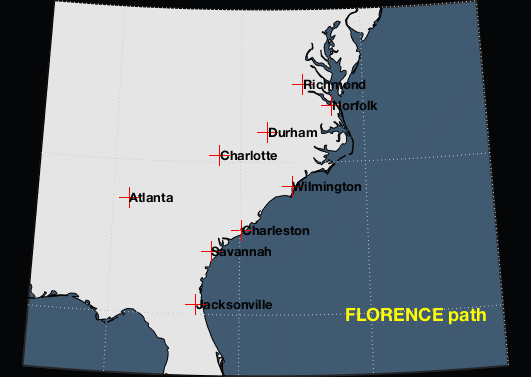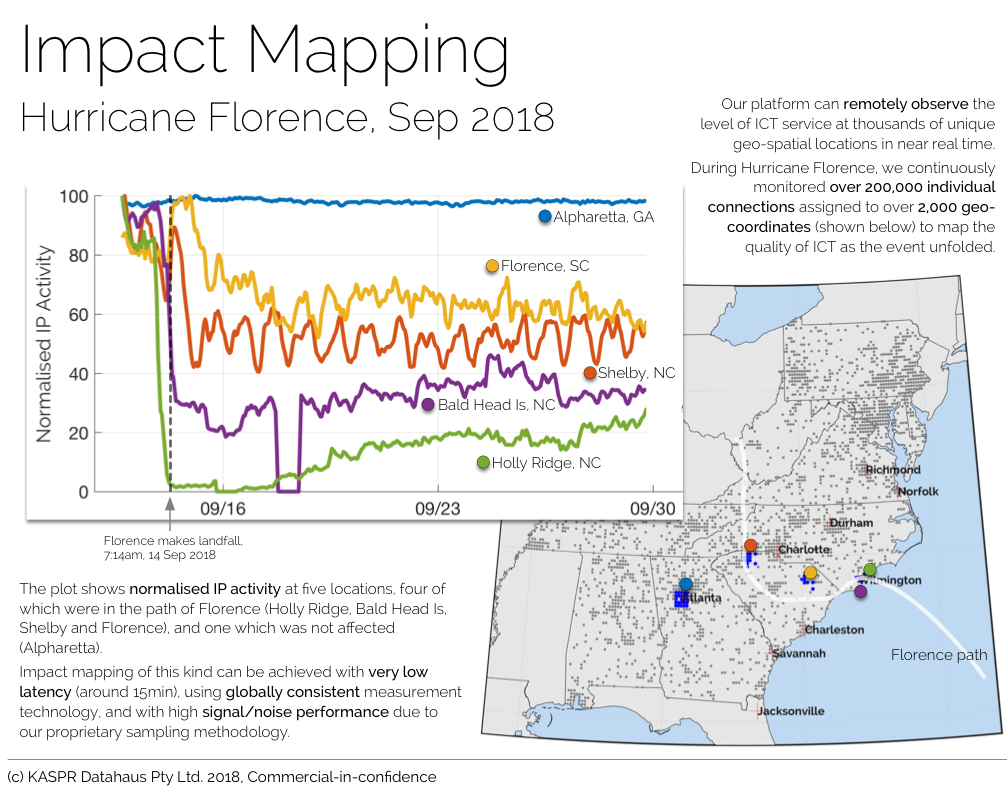Together with our research platform, the IP-Observatory, we have successfully implemented an IP scanning routine that allows us to monitor Hurricane Florence’s impact on internet infrastructure.
In particular, we are using (close to) real-time information about the online/offline activity of over 200,000 carefully selected, unique IP-addresses in the potentially affected areas on the US East Coast. Our infrastructure checks in with these addresses only every few minutes, ensuring that overall additional traffic loads to the area are minimised.We combine measurements of whether an IP address is online or offline with its geo-location and map the changes of Internet activity at an hourly rate. The results are presented in an animated map.
Our aim is to study the impact of Florence’s passage on the ICT infrastructure of affected regions.

This project also shows how alternative data can be used to measure the technological, financial and economic impacts of natural disasters in very granular detail.

KASPR’s critical incidence data products provide insights about the development of internet infrastructure in affected areas and allow a comparison to unaffected areas in close proximity (‘control’ areas).
Pre- and post scans allow a within and between comparison of the impact, while continued scanning during the aftermath of the event, measure the speed and extent of post-disaster recovery.
This data can generate valuable insights for the finance and insurance sector who are the the ones highly affected by natural disasters such as Hurricane Florence.
In addition, investors and public decision makers are able to monitor and evaluate the speed and outcomes of recovery investments.
